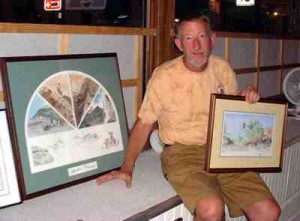Brief by Allen Best
Water – October 2005 – Colorado Central Magazine
One of the interior dramas of Colorado facing mountain towns is how Denver’s burgeoning southern suburbs will find more sustainable water supplies.
Suburbs located between Denver and Colorado Springs, especially in Douglas and Arapahoe counties, need water. A headquarters for a variety of high-tech, cable, and communications companies, the area is a statistical wünderkind. The fastest growing county in the United States during the 1990s, Douglas County has among the best educated, most affluent and reliably Republican populations in the West. But this fountain of wealth is mostly premised on underground aquifers that are steadily falling. Already, many wells have to be drilled deeper every year to ensure water.
By nearly all accounts, these new and shiny patches of city must figure out new sources of water, and in Colorado water sources rely on snowmelt from the Rocky Mountains. The big question is whether that means buying farms for their water (which originates in mountain snowmelt) or somehow tapping the remaining water that flows out of Colorado toward California.
Not much water remains in the headwaters streams. To get substantial quantities of unclaimed water means going to Steamboat Springs or even Grand Junction. Still, cities are trying to first grab what water remains along the Continental Divide, because it is closer and of higher quality.
To that end, Denver is trying to expand its diversions from the Winter Park area, where the Fraser River is a mere trickle of what it once was. Expanded diversions are also conceived at Dillon Reservoir, which is located in Summit County, and from the headwaters of the Eagle River, near where Vail is located.
Moving south, plans are afoot to take more water from the Roaring Fork River and tributaries in the Aspen area. And finally, one more watershed south, there is renewed talk of water from the Taylor Park area near Crested Butte. However, Steve Glaser, Crested Butte’s resident water expert, dismisses this project, called Union Park, as a “phantom.” That doesn’t stop proponents from wanting to meet with local officials to talk about their proposed 474-foot-high dam, which would create the largest reservoir in Colorado.

